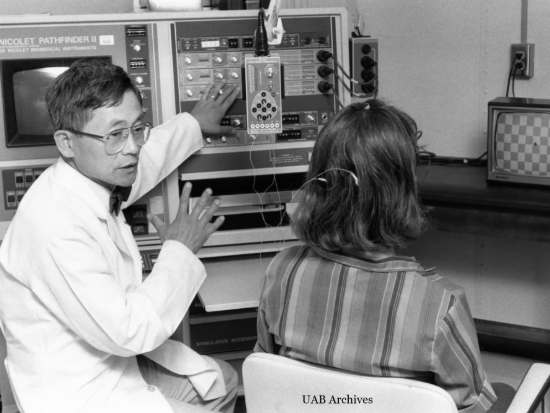 When Shin J. Oh, M.D., started at UAB in 1970, Richard Nixon was president, the Apollo 13 mission made its safe return home, and the price of gas averaged $0.36.
When Shin J. Oh, M.D., started at UAB in 1970, Richard Nixon was president, the Apollo 13 mission made its safe return home, and the price of gas averaged $0.36.
Also in 1970, Oh recalls that parking at UAB was a lot different.
“UAB was a small medical community,” Oh said. “At Jefferson Tower by the main hospital, all the faculty were able to park their car in one area. We had about 40 cars, and you could meet all the faculty of every specialty there. Now it’s amazing the size of UAB.”
A native of Haeju, Korea, Oh’s career in the field of neurology spanned 43 years before he retired in 2014: one of the longest neurology tenures in American medicine. A distinguished professor emeritus in the Department of Neurology who served four department chairs, Oh is a pioneer in neuromuscular disease – a subspecialty that he largely helped establish in the region.
‘Brand new territory’
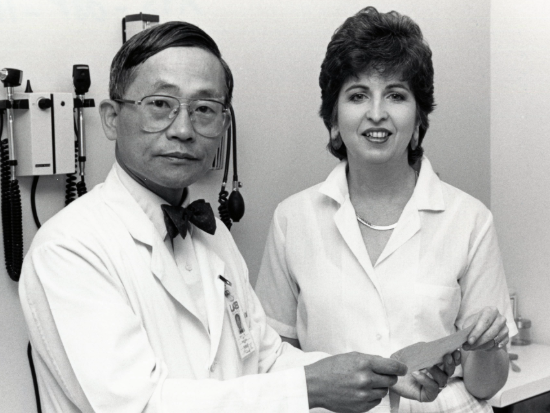 Oh received his medical degree from Seoul National University College of Medicine in 1960 and went on to complete a neurology residency there and at Georgetown University in Washington, D.C.
Oh received his medical degree from Seoul National University College of Medicine in 1960 and went on to complete a neurology residency there and at Georgetown University in Washington, D.C.
“There was no one who was specializing in neurology in Korea at that time,” Oh recalled. “I thought that would be a nice specialty to pursue and then be a teacher in Korea.”
It was during his residency at Georgetown, during a resident rotation at the NIH, that he became interested in neuromuscular disease, a subspecialty that he introduced to UAB for the first time when he came in 1970 as the institution’s third faculty member in neurology. Oh was also the sixth neurologist in the state of Alabama.
“We were practicing general neurology,” Oh said. “So, I took care of Parkinson’s disease, stroke, and so on. We didn’t have any sub-specialties.”
To start a neuromuscular disease specialty at UAB, “we had to start from the beginning,” Oh said. “We didn’t have an electromyography laboratory, muscle/nerve biopsy lab, or muscle/nerve histopathology laboratory.
“So, it’s brand-new territory at that time,” Oh added. “Nobody was specializing in neuromuscular disease from Florida to Georgia to Alabama. So, it was foreign territory where I got a lot of interesting cases.”
Making discoveries at UAB
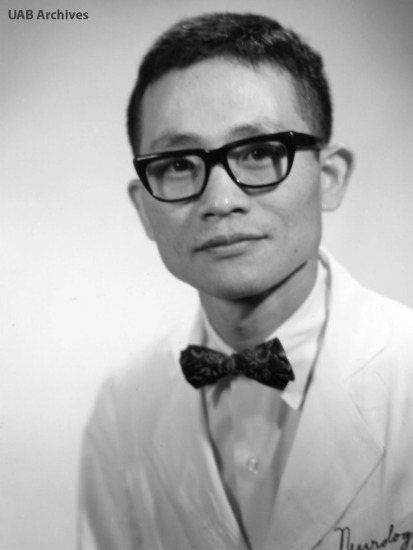 As one of the first neuromuscular specialists in the state, Oh established his UAB career in uncharted territory. This led to Oh being at the forefront of disease discovery and more.
As one of the first neuromuscular specialists in the state, Oh established his UAB career in uncharted territory. This led to Oh being at the forefront of disease discovery and more.
Oh specialized in the study of Lambert-Eaton myasthenic syndrome (LEMS), a rare auto-immune disorder that causes progressive muscle weakness and fatigue. It was described as a new disease in 1959.
“It’s a rare disease because we see one a year at UAB,” Oh said. “But we were able to collect 50 cases over my period. And then we were able to establish the diagnostic criteria and documented the treatment effect of the FDA’s approved old treatments, as well as participated in developing the new treatment, 3, 4 DAP (diaminopyridine), and 3, 4, DAP-phosphate.”
Oh coined the term, “MLOS” (Myasthenia Gravis Lambert Eaton Overlap Syndrome) for cases of Myasthenia gravis with electrophysiological characteristics of LEMS in 2016.
From many referred cases from the untapped territory of the tri-states, Oh was able to report a few new diseases.
He recalls one disease, called Danon disease, that he helped describe along with neurologist Moris Danon, M.D.
“It was almost like Pompe disease except for normal acid maltase activity in the blood,” Oh said. “And in fact, when I submitted the first paper, they rejected that article because they said, ‘there’s no such thing.’” Later, Danon would contact Oh with a similar case report, and the two went on to author the paper that would describe the disease officially in 1981.
Other discoveries that stand out to Oh during his time at UAB include congenital neuromuscular disease with uniform type 1 fiber and a familial case of distal spinal and bulbar muscular atrophy caused by dynactin, with help from a team at the NIH.
Oh’s team at UAB was able to report three newly termed disease entries: subacute inflammatory demyelinating neuropathy (SIDP), chronic demyelinating sensory neuropathy as a form of chronic inflammatory demyelinating neuropathy (CIDP), and chronic inflammatory axonal polyneuropathy (CIAP).
Accolades and training the next generation
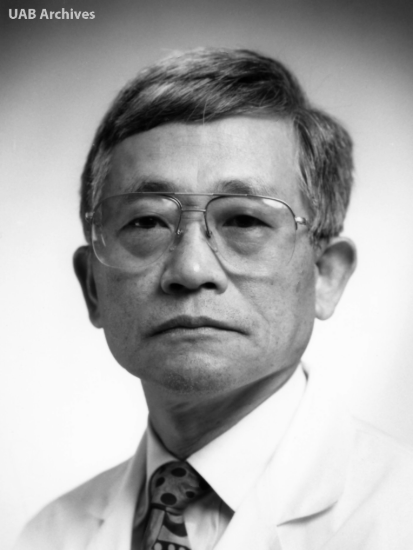 Oh’s clinical and research endeavors led to him becoming highly decorated. During his tenure, he served as chief of neurology at the Veterans Affairs Medical Center, as director of the Electromyography and Evoked Potential Laboratory, and as director of the Muscle and Nerve Histopathology Laboratory. He also served as director of the UAB Muscular Dystrophy Association Clinic and the Myasthenia Gravis Clinic.
Oh’s clinical and research endeavors led to him becoming highly decorated. During his tenure, he served as chief of neurology at the Veterans Affairs Medical Center, as director of the Electromyography and Evoked Potential Laboratory, and as director of the Muscle and Nerve Histopathology Laboratory. He also served as director of the UAB Muscular Dystrophy Association Clinic and the Myasthenia Gravis Clinic.
In 2009, the UAB Muscle and Nerve Histopathology Laboratory was renamed “The Shin J. Oh Muscle and Nerve Histopathology Laboratory at UAB.” He also received a lifetime achievement award from the American Association of Neuromuscular and Electrodiagnostic Medicine in 2015.
Aside from scientific discovery, Oh considers his educational role at UAB among his proudest achievements.
“My goal was really in trying to train neuromuscular disease specialists from foreign countries,” Oh said. “For example, in Korea, I trained 16 neuromuscular disease specialists who went back to become faculty there. I had 10 fellows from Turkey. And then six from Japan. And so on. And then they went back and became the leaders in their field.”
Among those in the Department of Neurology who worked with Oh for many years is Sandi Mumfrey-Thomas, administrator of the Division of Neuromuscular Disease, who met Oh in 1993.
"Dr. Shin J. Oh is world-renowned for his expertise in neuromuscular diseases and electromyography, and he is admired for his hard work and dedication to the field," Mumfrey-Thomas said. "He has a passion for teaching and helping people with their neuromuscular condition."
Mumfrey-Thomas recalled that while Oh was practicing at UAB, he rarely said "no" to adding one more patient to his already-busy clinical schedule or to the overbooked EMG lab schedule. His dedication to his patients, she added, was mirrored in his personal life.
"One thing that some may not know about Dr. Oh is his love for family and friends," Mumfrey-Thomas said. "While at UAB, he always enjoyed get-togethers and documenting every occasion by taking plenty of pictures. When seeing someone he hasn’t seen in a while, Dr. Oh would always inquire how one’s family is doing and specifically ask about their children and or grandchildren. I am sure this hasn’t changed since his retirement as this is who he is. It has truly been an honor and privilege to work with and learn from Dr. Oh."
The Oh Endowed Lectureship
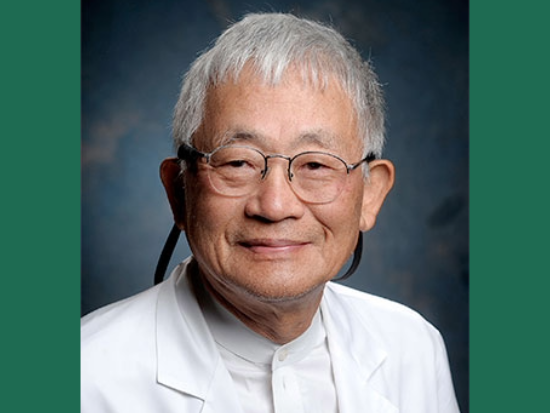 In 1994, Oh and his wife established the Oh Endowed Lectureship in the Department of Neurology to memorialize their daughter, who passed away suddenly during surgery. Oh said the lectureship invites prominent scholars and clinicians in the field to UAB to exchange knowledge.
In 1994, Oh and his wife established the Oh Endowed Lectureship in the Department of Neurology to memorialize their daughter, who passed away suddenly during surgery. Oh said the lectureship invites prominent scholars and clinicians in the field to UAB to exchange knowledge.
“We have invited many, almost all, of the major contributors to the field of neuromuscular disease of the 20th century.”
This year, Oh himself will be delivering the 31st Annual Oh Lecture titled “Symptomatic Treatment of LEMS: UAB Story,” on Tuesday, Nov. 19.
“Dr. Oh was a pioneer is so many ways – one of the first neurologists to practice in Alabama, part of the founding faculty of the UAB Department of Neurology, a leader in research on neuromuscular disease, and a teacher and mentor to a generation,” said David Standaert, M.D., Ph.D., professor and chair of the Department of Neurology. “It is a great privilege for us to have him present the 31st Annual Oh Lecture.”
As he reflects on his time spent at UAB, Oh said he is honored to have been part of its development over the past half a century.
“I’m really glad I was part of the growth of UAB,” Oh said. “I’m really proud of it.”